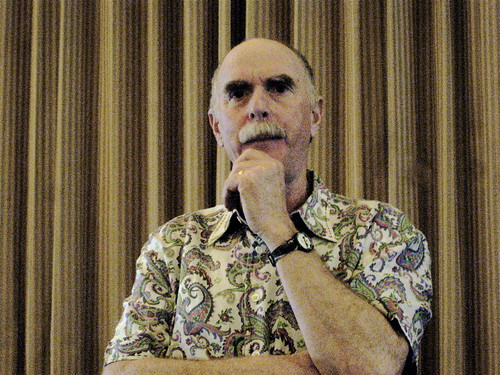As I’ve done previously (see 2009, 2010 and 2011), I wanted to share some of the best examples of student work from my ECMP 355 (Technology in Education) undergraduate course. These students are all preservice teachers and they range from being in the first to the fourth (final) year of our program. If you have any questions about the work featured here, please comment below or email me. I hope that you will find these projects valuable.
Final Projects: The goal of these projects varied – essentially, they were either of the ‘build a learning resource’ or ‘learn something of significance using the Internet’ variety.
- Cynthia – Cynthia explored the topic of light photography and shared her progress through this blog category.
- Cydney – Cydney learned to play the ukulele in this class – this link features a final performance with a friend. The documentation of her progress can be found here.
- Amanda W. – Amanda wanted to learn how to create mukluks, and she shared her progress through a number of blog posts.
- Caitlin – Caitlin learned about Yoga and created a series of vlogs on the topic, sharing what she learned and the resources that guided her progress.
- Nick – Nick’s project was focused on learning the guitar, and he’s shared his progress in this final post.
- Kirk – Kirk wanted to learn how to play the piano. He had a lot of help from his friends, and his entire journey is shared through this category and the accompanying videos. This particular video provides a nice summary.
- Kelsey – Kelsey wanted to learn how to make homemade soap, and this blog category shares her posts on the topic.
- Alyshia – Alyshia wanted  to learn how to play the piano, and more specifically how to read piano tabs (widely available on the Internet). Here is a link documenting her journey.
- Amy – Amy wanted to create a resource that would help provide guidance to those using technology in K-3 education (tied specifically to Saskatchewan’s curriculum but generally applicable), so she developed this wiki.
- Amanda C. – Amanda is in dance education, and wanted to create an original resource that would help other dance educators.
- Randi & Kelsi – These two students created a resource to support Chemistry instruction.
- Acsah – Acsah created a resource specifically devoted to teaching Grade 5 students.
- Alison – Alison created a screencast for her key learnings and supported it in a well-documented post.
- Amanda W. – Amanda shares her reflections through this screencast.
- Tori – Tori created a screencast to support her ‘top 5 take-aways from ECMP 355‘.
- Randi – Randi shares her learning revelations in this video/screencast.
- Colby – Colby created a song and video for his reflection.
- Melissa – Melissa shares her reflections about collaboration and blogging through this screencast.
- Brooklyn – Brooklyn shares her favorite tools and processes from the class in this video.
- Jesse – Jesse created a vlog to reflect on his learning.
- Ben – Ben used iMovie to create his final reflection.
- Tara – Tara used a mix of screencasting & vlogging to create a dramatic retelling of her learning.
- Matt – Matt created an amazing, Mario-inspired stop-motion animation. If you want to learn how he did it, see this follow-up post.



